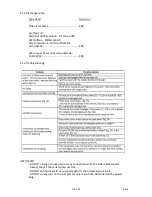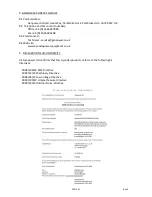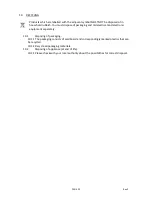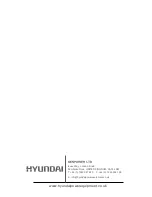
PAGE 9
Rev 2
4.
SPECIFIC SAFETY
Read and understand all of the operating instructions, safety precautions and warnings in the
Instruction Manual before operating or maintaining this compressor.
Most accidents that result from compressor operation and maintenance are caused by the
failure to observe basic safety rules or precautions. An accident can often be avoided by
recognizing a potentially hazardous situation before it occurs, and by observing appropriate
safety procedures.
Basic safety precautions are outlined in the “SAFETY” section of this Instruction Manual and in
the sections which contain the operation and maintenance instructions.
Hazards that must be avoided to prevent bodily injury or machine damage are identified by
WARNINGS on the compressor and in this Instruction Manual.
Never use this compressor in a manner that has not been specifically recommended by
manufacturer, unless you first confirm that the planned use will be safe for you and others.
SAFETY
IMPORTANT SAFETY INSTRUCTIONS FOR USE OF THE COMPRESSOR.
Death or serious bodily injury could result from improper or unsafe use of compressor. To
avoid these risks, follow these basic safety instructions.
READ ALL INSTRUCTIONS
4.1
Never touch moving parts Never place your hands, fingers or other body parts near the
compressor’s moving parts.
4.2
Never operate without all the guards in place. Never operate this compressor without all
guards or safety features in place and in proper working order. If maintenance or servicing
requires the removal of a guard or safety features, be sure to replace the guards or safety
feature before resuming operation of the compressor.
4.3
Always wear eye protection. Always wear safety goggles or equivalent eye
protection. Compressed air must never be aimed at anyone or any part of the body.
4.4
Protect yourself against electric shocks. Prevent body contact with grounded surfaces such
as pipes, radiators, ranges and refrigeration enclosures. Never operate the compressor in
damp or wet locations.
4.5
Disconnect the compressor. Always disconnect the compressor from the power source
and remove the compressed air from the air tank before servicing, inspecting, maintaining,
cleaning, replacing or checking any parts.
4.6
Avoid unintentional starting. DO NOT carry or move the compressor while it is connected
to its power source or when the air tank is filled with compressed air. Be sure the knob of the
pressure switch in the “OFF” position before connecting the compressor to its power source.
4.7
Store the compressor properly. When not in use, the compressor should be stored in dry
place. Keep out of reach of children. Lock the storage area.
4.8
Keep work area clean. Cluttered areas invite injuries. Clear all work areas of unnecessary
tools, debris, furniture etc.
4.9
Keep children away. All visitors should be kept safely away from work area.
4.10
Dress properly. DO NOT wear loose clothing or jewellery. They can be caught in
moving parts. Wear protective hair covering to contain long hair.
4.11
DO NOT abuse the power lead. Never yank it to disconnect from receptacle. Keep power
lead from heat, oil and sharp edges.
Summary of Contents for HY30100
Page 1: ...ELECTRIC AIR COMPRESSOR Models HY3050 HY30100 HY3150 User Manual...
Page 5: ...2 UNPACKING USAGE INSTRUCTION PAGE 5 Rev 2...
Page 6: ...PAGE 6 Rev 2...
Page 7: ...P AGE7 Rev 2...
Page 23: ...PAGE 23 Rev 2...










































